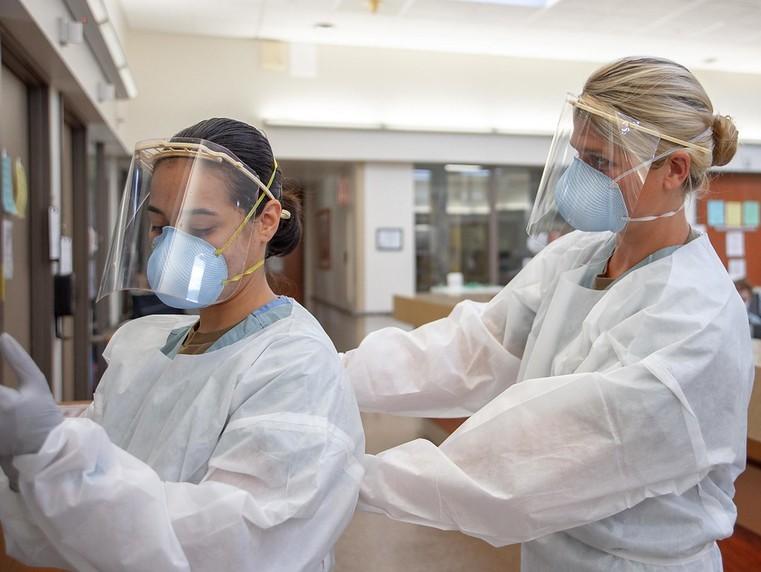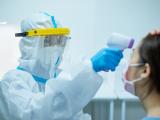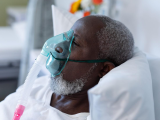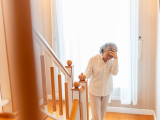Two new studies highlight the COVID-19 infection risks facing healthcare workers (HCWs) and their patients and families, the first study showing that more than 5,300 Minnesota HCWs had had high-risk contact with an infected person without adequate personal protective equipment (PPE) by July, and the other finding that while overall risks to HCWs are low, those who provide patient care are much more susceptible.
Of high-exposure-risk HCWs in the first study, 7% tested positive, but HCWs exposed to infected household or social contacts had a 13% positivity rate.
Family, friends pose highest risk of infection
The first study, published today in Morbidity and Mortality Weekly Report, found that, by Jul 11, 5,374 Minnesota HCWs had had high-risk prolonged close contact with a person infected with COVID-19 while not wearing appropriate PPE, and one third of those exposures occurred outside of patient care settings.
Led by the Minnesota Department of Health COVID-19 HCW Monitoring Response Team, the study involved analyzing mandatory reports from state healthcare facilities on personnel exposures to the coronavirus and conducting phone interviews with HCWs with high-risk or unknown exposures from Mar 6 to Jul 11.
Of the 21,406 exposures to COVID-19 involving 17,330 HCWs at 1,217 facilities, 5,374 (25%) were considered high-risk because the HCWs had been within 6 feet of an infected person for 15 minutes or more or were present during an aerosol-generating procedure. Of the 5,374 high-risk exposures, 597 (11%) involved HCWs providing care at multiple facilities.
The 21,406 exposures involved acute- or ambulatory-care patients (21% of exposures), residents in congregate or long-term care facilities (24%), coworkers (25%), congregate setting outbreaks (25%), and household members or friends (5%).
Of the 5,374 high-risk exposures, 4,328 (81%) took place in a medical setting, and 1,046 (19%) involved household members or friends. Of the 4,328 exposures in medical settings, 1,380 (32%) involved acute- or ambulatory-care patients, 1,185 (27%) involved congregate or nursing home residents, 980 (23%) involved multiple infected HCWs or residents in congregate or nursing home residents with outbreaks of at least four cases, and 783 (18%) involved a coworker.
Among the 4,669 (87%) high-risk exposures with available data, work roles included nurse assistant or aide (1,857 [40%]), nursing staff (1,416 [30%]), administration (247 [5%]), medical provider (220 [5%]), and environmental services (155 [3%]).
Within 14 days of a high-risk exposure, 373 of 5,374 HCWs (6.9%) received positive test results. HCWs exposed to infected household or social contacts had the highest positivity rate (13.0%).
Exposure risks
Of HCWs with high-risk exposures, those working in congregate-living and long-term care facilities were more likely than those in acute-care settings to return to work (57% vs 37%), work while they had symptoms (4.8% vs 1.3%), and to test positive for the coronavirus during 14-day postexposure monitoring (9.6% vs 3%).
Of the 913 high-risk exposures with data on PPE use when providing acute or ambulatory patient care, 822 (90%) involved HCWs wearing a medical-grade face mask or respirator, and 240 (26%) involved eye protection. But substantially fewer HCWs wore medical-grade masks or respirators (611 of 905 [68%]) or eye protection (140 [16%]) when exposed to infected patients in congregate or long-term care facilities.
The authors said that the results underscore the need for HCWs to be vigilant about avoiding nonpatient-care–related COVID-19 exposures and for healthcare facilities to use targeted interventions to protect HCWs, residents, and patients, such as flexible sick leave, access to testing, and provision of adequate PPE.
"HCP [healthcare personnel] should recognize potential exposures unrelated to patient care and use prevention measures, including masks," the authors concluded. "HCP in congregate living and long-term care settings experience considerable risk and pose a transmission risk to residents. Improved access to personal protective equipment, flexible medical leave, and testing is needed."
Two to three times the risk of hospitalization
The second study, published Oct 28 in BMJ, evaluated the risk of hospitalization for COVID-19 among patient-facing and non–patient-facing HCWs, their household members, and the general public in Scotland from Mar 1 to Jun 6. Of 158,445 HCWs, 90,733 (57.3%) worked with patients; in total, they had 229,905 household contacts.
Of all hospitalizations for COVID-19, HCWs or their household members made up 17.2% (360/2,097). After multivariate adjustment, a similar percentage of non–patient-facing HCWs and their household members were hospitalized owing to the coronavirus as the general public (hazard ratio [HR] for HCWs and households, 0.81 vs 0.86 for general population).
After multivariate adjustment, however, patient-facing HCWs were at higher risk of hospitalization than those not caring for patients (HR, 3.30), as were their households (1.79). The estimated absolute risk of hospitalization for COVID-19 was less than 0.5%, although it rose to 1% or higher in older men with underlying medical conditions.
Of all HCWs admitted to the hospital, one in eight required critical care, and six (2.5%) died; of their hospitalized household members, one in five needed critical care, and 18 (12.9%) died.
"Healthcare workers and their households contributed a sixth of covid-19 cases admitted to hospital," the authors wrote. "Although the absolute risk of admission was low overall, patient facing healthcare workers and their household members had threefold and twofold increased risks of admission with COVID-19.…These findings should inform decisions about the organisation of health services, the use of personal protective equipment, and redeployment."
In an editorial in the same journal, Ulf Karlsson, MD, PhD, and Carl-Johan Fraenkel, MD, of Skane University Hospital in Lund, Sweden, said that, although advances in knowledge of COVID-19 may have reduced the risks to HCWs since early in the pandemic, further studies are needed.
"High quality prospective studies evaluating new prevention and control practices will be important to guide improvements in our approach to protecting healthcare workers and their families, including those from ethnic minority communities who have the highest risks of infection and poor outcomes, widening workplace inequality," they said.






















